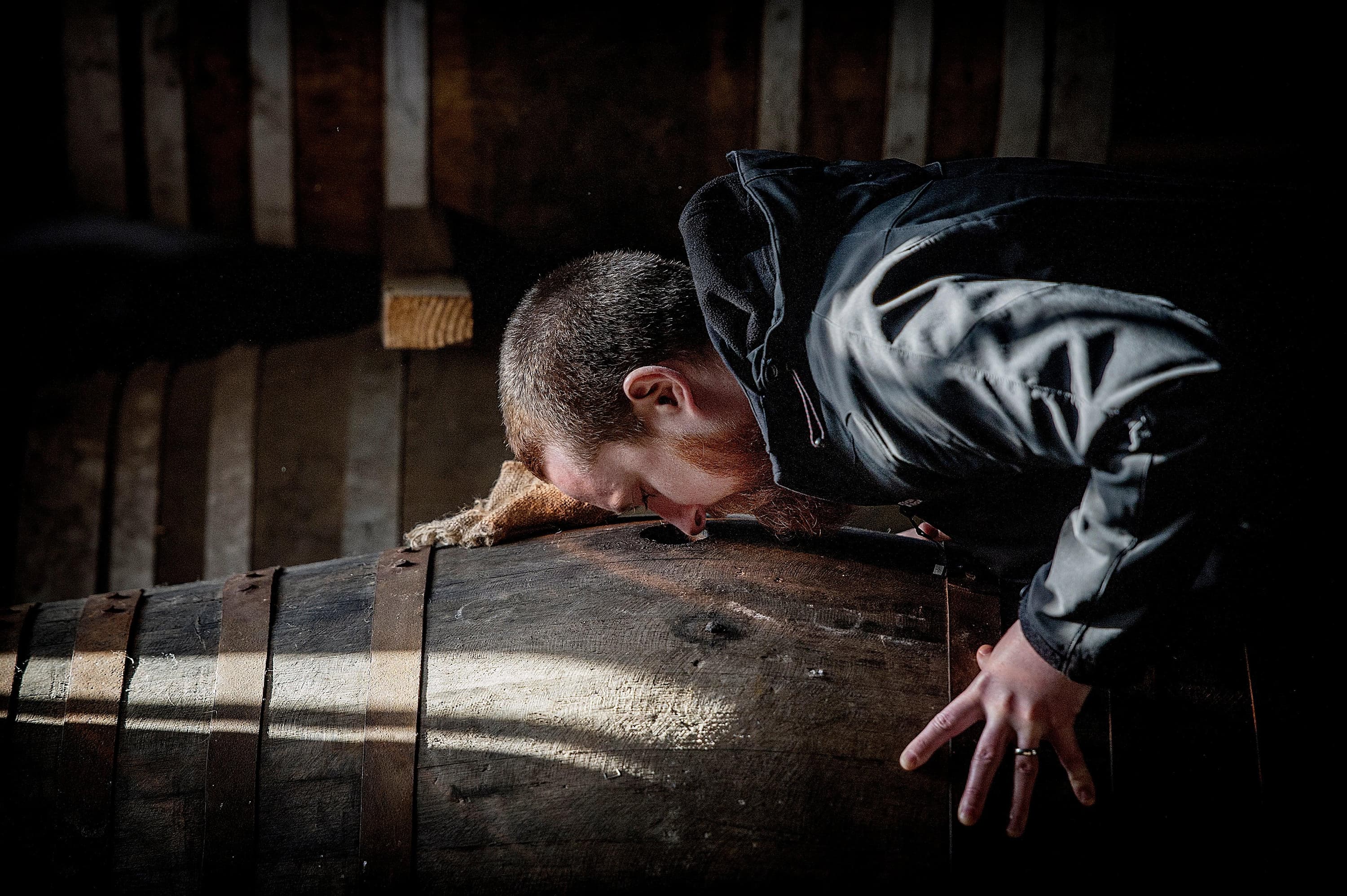At The Scotch Malt Whisky Society, we embrace a unique style of whisky called single cask whisky. Unlike the more traditional style of Scotch known as single malt, which is achieved by blending the contents of multiple casks from the same distillery into one whisky, a bottle labeled single cask whisky suggest that its contents came from only one cask.
There are many factors that contribute to the style and flavour of a single cask whisky. From the type and quality of grain being sourced to the method in which the spirit is distilled to the type of cask that the spirit will age in, all of these factors play a major role. With single cask whisky, only one cask is used in the creation giving it a role all the more important. Everything from the species of oak the cask was made from, the prior contents of the cask (e.g. wine, sherry, bourbon) and the size of the vessel itself does leave a significant impact on the profile of the whisky
Contrary to popular belief, understanding the different types of casks and how they relate to flavour is not as hard as you may think. Let’s have a look at the three of the most common cask types and some of the whiskies that embody the unique characteristics of each.
Barrel
Let’s start with the mighty barrel, often considered the gold standard for Scotch whisky maturation. Barrels are made from charred American white oak and generally imported to Scotland by way of bourbon distillers in America. In America, whiskey such as bourbon must be aged in new oak casks whereas in Scotland it’s perfectly acceptable, and more common, to age Scotch in used oak casks.
At roughly 200 liters, the barrel is one of the smallest casks for Scotch whisky maturation. As a rule of thumb, the smaller the cask, the greater the ratio of wood to liquid. This increases the degree of influence that the wood will have on the spirit in a given period of time. Because of this, Scotch whisky distillers will generally age their spirit in barrels for no more than 15 years, defaulting to larger casks for longer maturation.
At The Scotch Malt Whisky Society, we are always looking for casks that offer unique flavours and characteristics compared to what you might find on the shelf at your local whisky shop. Luckily, we’ve been able to mature a number of bourbon barrels for a greater length of time, offering an intense concentration of flavour for members to experience. Cask 35.233 ‘Banana smoothie’ and Cask 35.236 ‘From Elgin with love’ are two 23-year-old whiskies matured in a first-fill bourbon barrel. While each cask possesses its own unique flavours and aromas, both offer a highly concentrated array of what I consider to be the classic notes of a bourbon barrel; toasted caramel, vanilla and citrus peel.
Hogshead
The Hogshead is one of the most popular if not the most popular types of casks used for aging whisky in Scotland today. Its approximate capacity of 238 liters makes it slightly larger than a barrel, reducing the degree of influence that the wood will have on the spirit inside it. Hogsheads can be made from American or European oak but the majority of these casks found in Scotland today are American oak. In fact, most hogsheads are made by breaking down the bourbon barrels imported from America and using the staves to assemble the larger cask.
Hogsheads are great for Scotch distillers who want to create a whisky with a more spirit-driven character. When it comes to peated whisky, I tend to lean toward those that are matured in hogsheads over barrels. There are pros and cons to both but with a hogshead, the smoky note is less restricted than it would be with a more influential cask such as a barrel. Cask 53.101 ‘Tenticles around a wine glass’ and Cask 135.15 ‘Back to the suture’ are perfect examples of bold and intense whiskies whose properties have not been diminished due to significant cask influence.
Barrique
While barrels and hogsheads represent the majority of casks aging whisky in Scotland today, there is another type of cask that seems to be on the rise: the barrique. The barrique, which simply translates to “barrel” in French, has become the standard cask used for making wine. The majority of barriques are imported from France with a heavy concentration from Bordeaux. The Scotch whisky industry has been experimenting with both red and white wine barriques for decades but in recent years, perhaps as the results of French wine and spirits companies taking ownership of major distilleries, the barrique is earning its place among the more traditional casks used in Scotland.
At 225 liters, the barrique falls just between the barrel and hogshead. The main difference between these two, however, is the species of oak and the contents that came before it. French oak lends more spice and tannins to the spirit and along with the influence of the previous wine itself, can make for a wild and evocative whisky. Cask 94.5 ‘Vineyard mud guard’ is the quintessential example offering an exotic profile of old leather, fermented grapes and apple cider. Cask 135.14 ‘Tripping the light fantastic’ takes that profile and adds a light touch of Scottish peat smoke, resulting in a symphonic, cultural experience that just tastes fantastic.
Well, that sums up three of the more prevalent casks types used for whisky maturation today. Ultimately, the best way to understanding the impact of wood and its many shapes and sizes is to go out and try the whisky yourself! Tasting is the ultimate path to learning and I couldn’t think of a better ‘sport’ for us to take on this winter.



